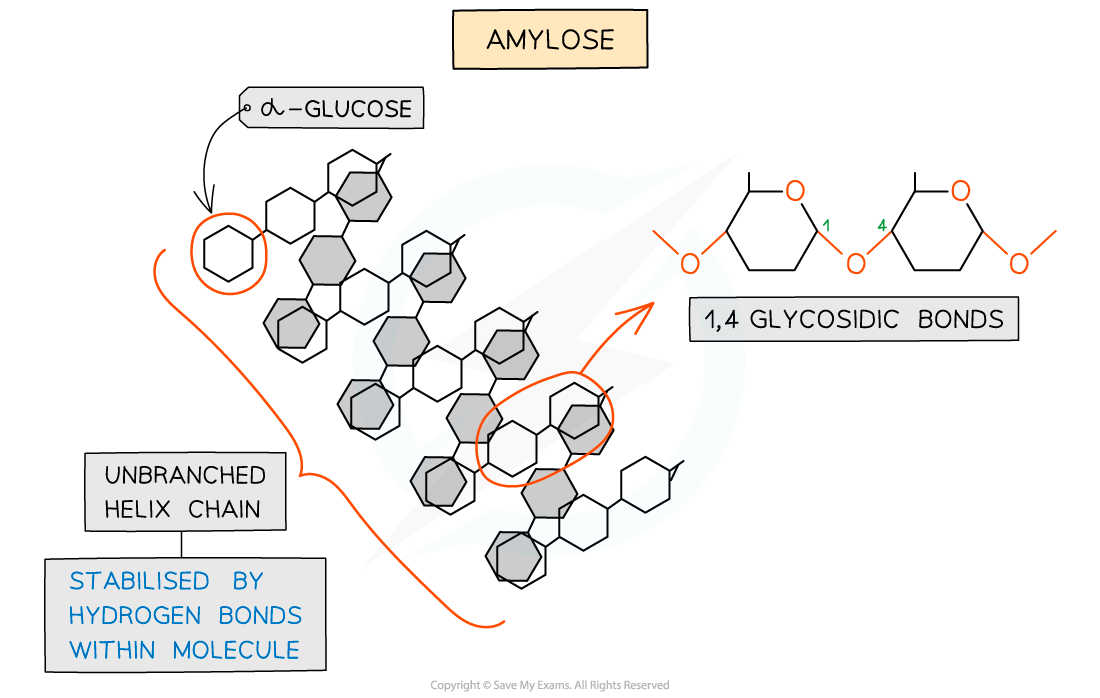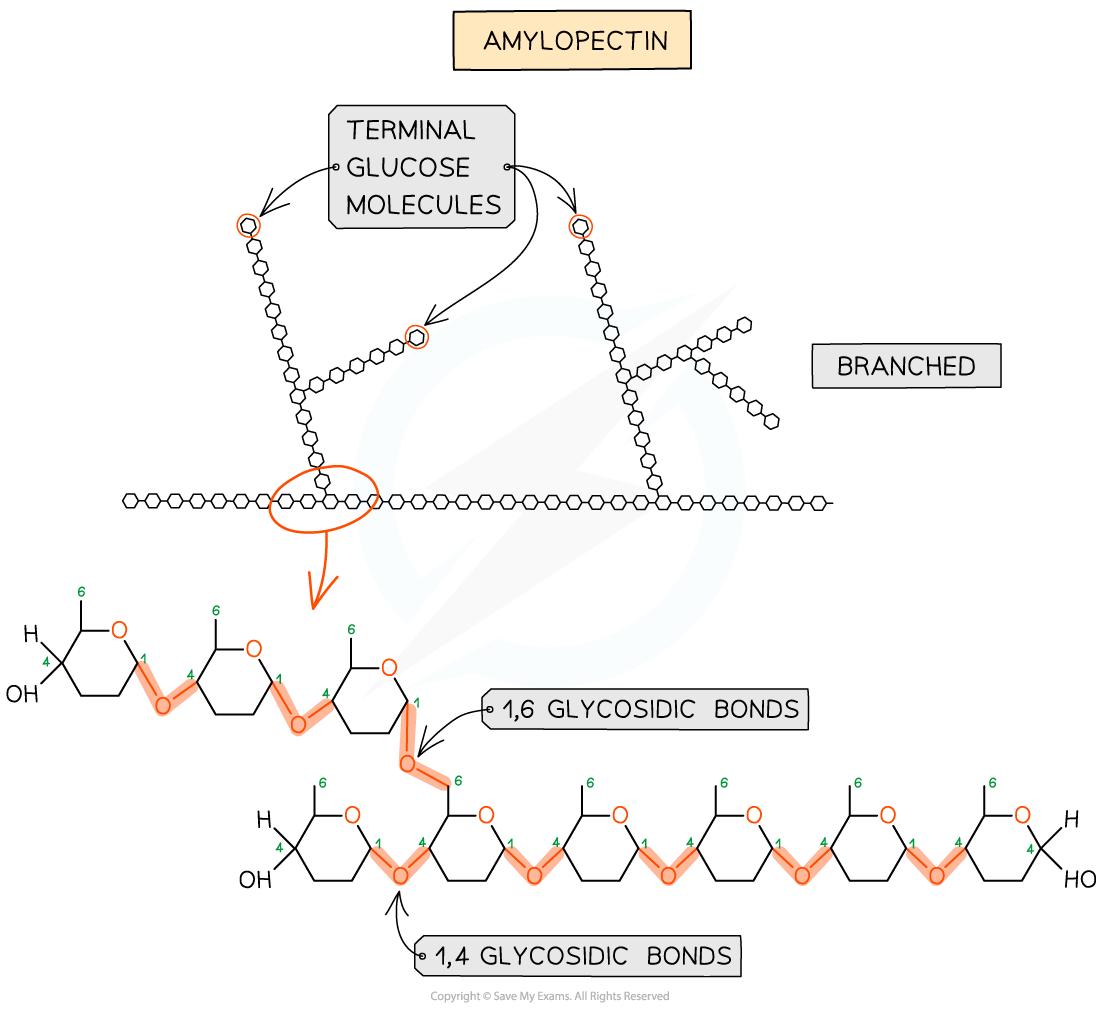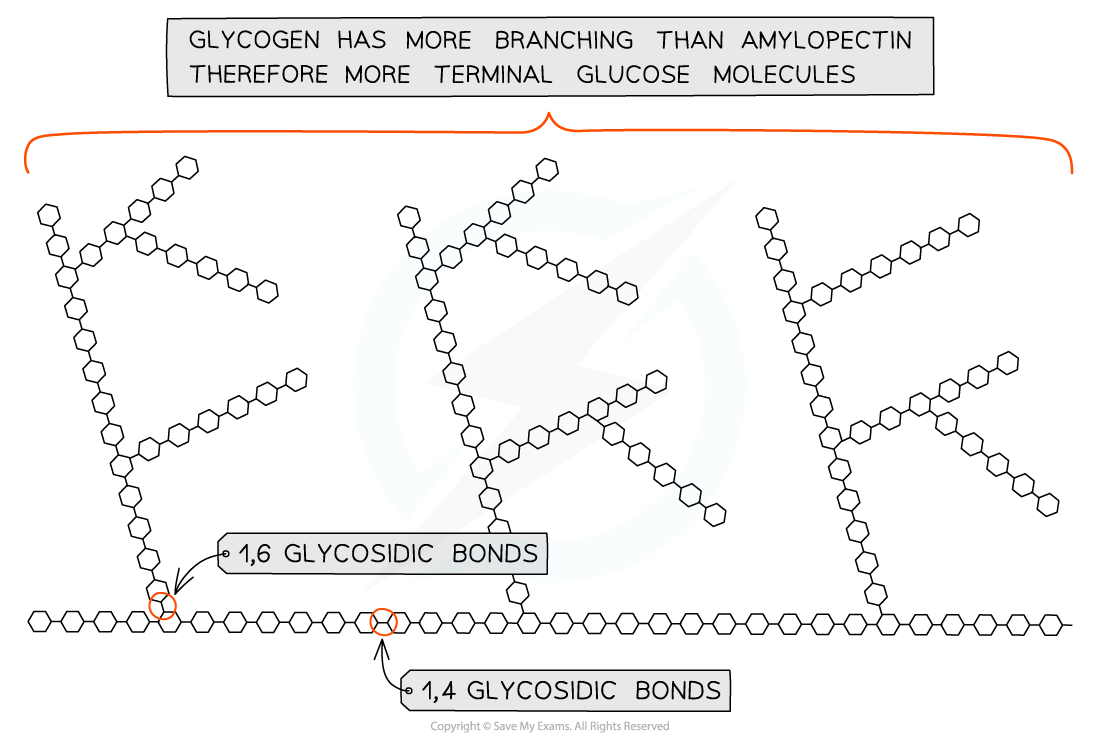Starch & Glycogen (Cambridge (CIE) A Level Biology): Revision Note
Exam code: 9700
Starch & glycogen: structures & functions
Starch and glycogen are polysaccharides
Polysaccharides are polymers formed from many monosaccharides joined by glycosidic bonds to form chains; these chains may be:
Branched or unbranched
Folded
Straight or coiled
Starch and glycogen are storage polysaccharides because they are:
Compact
Many molecules fit into a small space, so large volumes can be stored inside cells
Insoluble
They do not dissolve in the cell cytoplasm, so have no osmotic effect on cells; soluble molecules like glucose would lower the water potential of cell cytoplasm, drawing water into cells by osmosis
Starch
Starch is the storage polysaccharide of plants. It is stored as granules in plastids (e.g. chloroplasts)
Due to the many monomers in a starch molecule, it takes longer to digest than glucose
Starch is constructed from two different polysaccharides:
Amylose (10 - 30% of starch)
Unbranched helix-shaped chain with 1,4 glycosidic bonds between α-glucose molecules
The helix shape enables it to be more compact and thus it is more resistant to digestion

Amylopectin (70 - 90% of starch)
1,4 glycosidic bonds between α-glucose molecules but also 1,6 glycosidic bonds form between glucose molecules creating a branched molecule
The branches result in many terminal glucose molecules that can be easily hydrolysed for use during cellular respiration or added to for storage

Glycogen
Glycogen is the storage polysaccharide of animals and fungi, it is highly branched and not coiled
Liver and muscles cells have a high concentration of glycogen, present as visible granules, as the cellular respiration rate is high in these cells (due to animals being mobile)
Glycogen is more branched than amylopectin making it more compact which helps animals store more
The branching enables more free ends where glucose molecules can either be added or removed allowing for condensation and hydrolysis reactions to occur more rapidly – thus the storage or release of glucose can suit the demands of the cell

Feature | Starch | Glycogen | |
|---|---|---|---|
Amylose | Amylopectin | ||
Monomer | α-glucose | α-glucose | α-glucose |
Branched | No | Yes | Yes |
Helix shape | Yes | No | No |
Glycosidic Bond Present | 1,4 | 1,4 and 1,6 | 1,4 and 1,6 |
Source | Plants | Plants | Animals |
Examiner Tips and Tricks
Be clear about the differences between starch (amylose and amylopectin) and glycogen.

Unlock more, it's free!
Did this page help you?